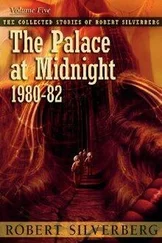Kermit Heartsong - Ukraine - ZBIG's Grand Chess Board & How The West Was Checkmated
Здесь есть возможность читать онлайн «Kermit Heartsong - Ukraine - ZBIG's Grand Chess Board & How The West Was Checkmated» весь текст электронной книги совершенно бесплатно (целиком полную версию без сокращений). В некоторых случаях можно слушать аудио, скачать через торрент в формате fb2 и присутствует краткое содержание. Год выпуска: 2015, Жанр: Политика, на английском языке. Описание произведения, (предисловие) а так же отзывы посетителей доступны на портале библиотеки ЛибКат.
- Название:Ukraine: ZBIG's Grand Chess Board & How The West Was Checkmated
- Автор:
- Жанр:
- Год:2015
- ISBN:нет данных
- Рейтинг книги:4 / 5. Голосов: 1
-
Избранное:Добавить в избранное
- Отзывы:
-
Ваша оценка:
- 80
- 1
- 2
- 3
- 4
- 5
Ukraine: ZBIG's Grand Chess Board & How The West Was Checkmated: краткое содержание, описание и аннотация
Предлагаем к чтению аннотацию, описание, краткое содержание или предисловие (зависит от того, что написал сам автор книги «Ukraine: ZBIG's Grand Chess Board & How The West Was Checkmated»). Если вы не нашли необходимую информацию о книге — напишите в комментариях, мы постараемся отыскать её.
Ukraine: ZBIG's Grand Chess Board & How The West Was Checkmated — читать онлайн бесплатно полную книгу (весь текст) целиком
Ниже представлен текст книги, разбитый по страницам. Система сохранения места последней прочитанной страницы, позволяет с удобством читать онлайн бесплатно книгу «Ukraine: ZBIG's Grand Chess Board & How The West Was Checkmated», без необходимости каждый раз заново искать на чём Вы остановились. Поставьте закладку, и сможете в любой момент перейти на страницу, на которой закончили чтение.
Интервал:
Закладка:
This color revolution, however, proved unsuccessful, as Deng quickly arrested Sharp and expelled him from China.
Despite the failure, Sharp was able to learn important lessons regarding the mobilization of young activists and how to successfully manipulate them toward a desired end. The method as summed up by Meyssan:
Exacerbate all underlying frustrations, blame the political apparatus for all the problems, manipulate the youth according to the Freudian “patricidal” scenario, organize a coup, and then propagandize that the government was brought down by the “street.” (Meyssan 2012)
Sharp would take the lessons learned from this first experiment and, with the assistance of Colonel Reuven Gal, then chief psychologist of the Israeli Army, set up “training programs for young activists, with the objective of organizing coups” (Meyssan 2012). Sharp and Gal’s strategy would be coupled with a concept, developed by the RAND Corporation in the late 1990s, called “swarming.” Swarming, as alluded to earlier, is the concept of utilizing the communication patterns and movements of insects to direct spontaneous protests against targeted leaders via GPS satellite images, chat rooms, instant messaging, cell phone text messaging, and blog sites (Engdahl 2009).
The test case for the full implementation of this advanced form of a color revolution, as coupled with the swarming technique, came in Belgrade, Yugoslavia in the year 2000. The target for regime change via this improved version of color revolution was President Slobodan Milosevic.
The Clinton Administration began its color revolution against President Milosevic with a $41 million budget that was run from the American Consulate via the office of Ambassador Richard Miles (Engdahl 2009). The campaign involved coordinating popularity polls and the training of thousands of opposition activists in organizing strikes, communicating with symbols (in order to obscure their messages), overcoming fear, and undermining the authority of the Milosevic regime. Of tantamount importance was the organization of a parallel vote count to sow doubt should the initial vote not go as desired (Engdahl 2009). As Engdahl states:
Thousands of spray paint cans were used “by student activists to scrawl anti-Milosevic graffiti on walls across Serbia,” and throughout the country around 2.5 million stickers featured the slogan “Gotov Je,” meaning “He's Finished.” Milosevic was deposed by a successful high-tech coup that became “the hallmark of the US Defense policies under (Rumsfeld) at the Pentagon.” It became the civilian counterpart to his “Revolution in Military Affairs” doctrine using “highly mobile, weaponized small groups directed by 'real time' intelligence and communications. (Engdahl 2009)
The campaign waged against Milosovec would now serve as the basis for all future color revolutions to be directed at leaders who embraced a different concept of what was good for their state and their people.
Subsequent color revolutions would follow in the Rose Revolution (Georgia 2003), the Orange Revolution (Ukraine 2004), Tulip Revolution (Kyrgyzstan 2005), Cedar Revolution (Lebanon 2005), Blue Revolution (Kuwait 2005), Saffron Revolution (Myanmar 2007) and the Green Revolution (Iran 2009), to name but a few.
The results of the various successful color revolutions, despite their lofty promises and without exception, have brought social, political, and economic suffering for the targeted nation’s masses via the Western plundering of resources, privatization, and extortion as implemented by the World Bank and the IMF’s austerity programs. Or succinctly put, the end goals of color revolutions are chaos, instability, and asset pillage. As stated by Sergey Kuzhugetovich Shoygu, Russian Minister of Defense:
The Arab Spring, for example, has destabilized the Middle East and North Africa. Now, a whole range of African states are near collapse because of the effects of events in Libya. Afghanistan is also increasingly unstable. (Shoygu 2014)
In the end, color revolutions are indeed a form of swarming social warfare, carefully staged by intelligence operatives often embedded in non-governmental organizations (NGOs) that seek to manipulate rebellion, class divide, and social discord to orchestrate political change, regime change, and asset stripping in a given country. Key end goals of the various color revolutions — as they are sold to the masses, however, are hope and change, freedom, democracy, EU candidacy (when appropriate) and other objectives that the demonstrators can “believe in,” despite their ultimate hollowness.
How They Work — The Details
Color revolutions as developed by Gene Sharp and refined by Colonel Reuven Gal, provided the US with an operating manual. The RAND Corporation provided the tools, soft weapons, and the concept of swarming as subsequently allied to the development of social media.
The forward operating bases, intelligence agents, and command staffs for color revolutions are often found in organizations such as the Albert Einstein Institute (AEI), National Endowment for Democracy (NED), International Republican Institute (IRI), National Democratic Institute (NDI), Freedom House and the International Center for Non-Violent Conflict (ICNC).
The funding apparatus for the above organizations is the US Agency for International Development (USAID), which is the de facto financial branch of the State Department. As Eva Golinger (2010) states in her article, “Color Revolutions: A New Form of Regime Change, Made in USA:”
Today, USAID has become a critical part of the security, intelligence and defense axis in Washington. In 2009, the Interagency Counterinsurgency Initiative became official doctrine in the US. Now, USAID is the principal entity that promotes the economic and strategic interests of the US across the globe as part of counterinsurgency operations. Its departments dedicated to transition initiatives, reconstruction, conflict management, economic development, governance and democracy are the main venues through which millions of dollars are filtered from Washington to political parties, NGOs, student organizations and movements that promote US agenda worldwide. Wherever a coup d'etat, a colored revolution or a regime change favorable to US interests occurs, USAID and its flow of dollars is there. (Golinger 2010)
The operating instructions for color revolutions, which interestingly enough, are run like a marketing campaign, are as follows (Golinger 2010):
•Find a country with significant natural resources — like oil or gas — that is geostrategically positioned to advance Western interests or that conducts a foreign policy independent of or at odds with the West in general, or Washington, in particular. And if the country, as determined by any one of the above criteria, is unstable, socially stratified, financially weak, or militarily impotent, all the better.
•Identify and enlist student and various youth movements and organizations to spearhead the campaign. They will serve as the “Fresh face (the ‘Fodder Units’),” attracting others to join in as though it were the fashion, the ‘in’ thing to do.”
•Next, pick a color (rose, orange, green), a symbol (fist, open hand, Nazi Wolfsangel, etc.), and a brand to unite and rally the masses to a common, identifiable cause — freedom, democracy, acceptance by the West.
•Plan protest and/or destabilization campaigns in conjunction with an upcoming electoral campaign and make sure to organize a very visible parallel vote count, which will be necessary in the end to highlight voter tension, raise questions of rampant fraud, and to discredit the elections and exit polls, should the color revolution’s desired candidate fail to win.
•Target the security forces and police with the intention to win them over, engage them with the message of commonality, that they too will benefit from a change in the current regime and the freedoms that will be won once the current regime is gone (Golinger 2010).
Читать дальшеИнтервал:
Закладка:
Похожие книги на «Ukraine: ZBIG's Grand Chess Board & How The West Was Checkmated»
Представляем Вашему вниманию похожие книги на «Ukraine: ZBIG's Grand Chess Board & How The West Was Checkmated» списком для выбора. Мы отобрали схожую по названию и смыслу литературу в надежде предоставить читателям больше вариантов отыскать новые, интересные, ещё непрочитанные произведения.
Обсуждение, отзывы о книге «Ukraine: ZBIG's Grand Chess Board & How The West Was Checkmated» и просто собственные мнения читателей. Оставьте ваши комментарии, напишите, что Вы думаете о произведении, его смысле или главных героях. Укажите что конкретно понравилось, а что нет, и почему Вы так считаете.











